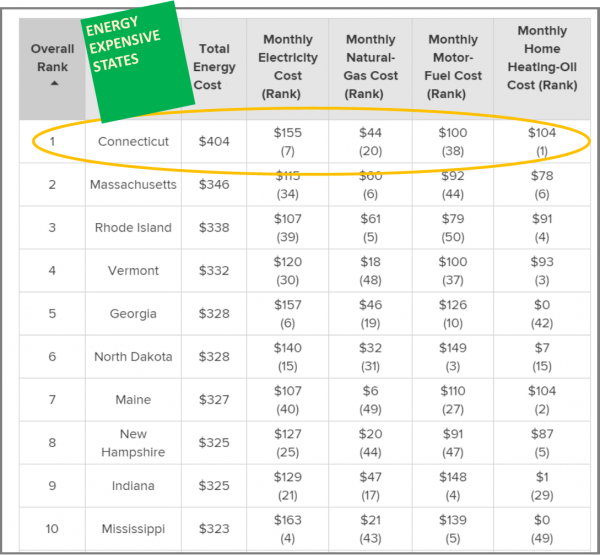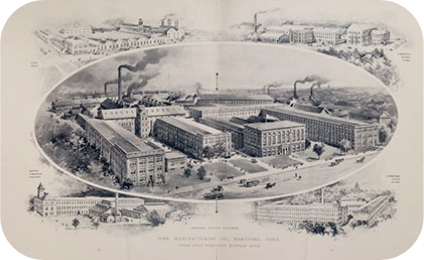Connecticut Among 11 States Upgrading to Next Generation 911
/Connecticut is one of 11 states that have upgraded, or are in the process of upgrading, their Emergency 911 system to what’s called Next Generation 911, to allow the emergency notification system to respond to text messages and utilize a range of new technologies. Connecticut’s upgrade began last year, and is expected to be fully operational later this year.
The National Emergency Number Association (NENA), which represents government agencies and private firms involved in the emergency system, and the National 911 Program, housed in the U.S. Department of Transportation, are pushing states and localities to adopt what they call Next Generation 911, according to a published report in Governing magazine. 
The urgency driving the upgrade effort was highlighted in recent weeks. Like most 911 systems in the U.S., Orlando’s emergency communication center cannot receive text messages, photos or videos. Nor can most 911 systems tap into other mobile device features, like detailed location services, Governing points out.
The magazine, which focuses on state and local government operations, notes that texting 911 could be valuable in emergencies like the Orlando shooting or a domestic violence incident, where it is unsafe to make any noise let alone talk out loud about the danger at hand. And sending text messages to 911 could allow people who are deaf or have speech impairments to communicate without other special devices.
One day last month, a computer glitch knocked out portions of the statewide 911 system briefly in Connecticut. The Hartford Courant is reporting today that state officials have determined the partially installed high-tech 911 emergency dispatch system became overwhelmed by duplicate messages July 15, leading to a breakdown that failed to connect callers at about half the call centers. The state has temporarily halted a $13.2 million upgrade of the system, William Youell, director of the Division of Statewide Emergency Telecommunications, told the Courant.
Connecticut’s Department of Emergency Services and Public Protection (formerly Emergency Management and Homeland Security) reports that The Next Generation 9-1-1 system is Internet Protocol based and will utilize the new Connecticut Public Safety Data Network to deliver 911 calls to Public Safety Answering Points (PSAPs) in Connecticut.
The new system, according to the agency’s website, will provide the infrastructure to allow “Text to 9-1-1”, the ability to send images or video with a 9-1-1 call to a PSAP, and to call 9-1-1 directly via the Internet when telecommunication service providers make these features available to the public.
It has been estimated that full implementation of the system, which began in the spring of 2015, would take 18 months. Initial installation of the system call answering components first got underway at ten pilot PSAPs around the state in May 2015, in New Britain, Wilton, Enfield, Newington, Valley Shore (12 towns), Fairfield, Middletown, Mashantucket, Shelton, and Wolcott. Training sessions for PSAP personnel have been held in New Haven, in collaboration with AT&T.
Four states — Indiana, Iowa, Maine and Vermont — already have moved to Next Generation 911, according to NENA. Another seven — Connecticut, Hawaii, Massachusetts, North Dakota, South Dakota, Tennessee and Virginia — are doing so, Governing points out. The goal is for there to be a nationwide changeover completed by 2020, as utility companies abandon old copper phone lines for fiber optic cables.
In at least five additional states — Florida, Illinois, Michigan, Ohio and Texas — city, county and local governments either have upgraded their systems or are in the process of doing so. But in at least six states — Georgia, Missouri, Nevada, New Mexico, Oklahoma and West Virginia — it is unclear if any preparations for the switch have been made at the state or local level, according to the Governing update.
 The entire statewide system in Connecticut, purchased through A&T, cost $13.26 million with annual maintenance costs of about $3.2 million, Stephen Verbil, a telecommunications manager with the Division of the Statewide Emergency Communications, told the Day of New London last year. The system uses Dell servers connected through a fiber optic network and is paid for through a surcharge on land lines and cellphones.
The entire statewide system in Connecticut, purchased through A&T, cost $13.26 million with annual maintenance costs of about $3.2 million, Stephen Verbil, a telecommunications manager with the Division of the Statewide Emergency Communications, told the Day of New London last year. The system uses Dell servers connected through a fiber optic network and is paid for through a surcharge on land lines and cellphones.
Finding callers who aren’t using landlines, which are registered to a physical address, has been a problem since cellphones became popular in the 1990s, Governing reported. Calls to 911 from cellphones are not routed based on the exact location of the caller, but on the location of the tower transmitting that call. This can lead to emergency calls getting answered by faraway call centers and make it hard for responders to locate the caller. Next Generation 911 will be able to use technology like Wi-Fi, Bluetooth signals and geographic information systems to find mobile callers, Trey Forgety, government affairs director for NENA, told Governing.


 The same measure showed the age 20-34 demographic group, at 0.22 percent, was considerably below the rate for other age groups. (This rate means that 221 out of every 100,000 adults in this age group became entrepreneurs in a given month.) The data also indicates that the rate of new entrepreneurs for the age 20-34 group is down from the high point for this age group of 0.28 percent in 1996.
The same measure showed the age 20-34 demographic group, at 0.22 percent, was considerably below the rate for other age groups. (This rate means that 221 out of every 100,000 adults in this age group became entrepreneurs in a given month.) The data also indicates that the rate of new entrepreneurs for the age 20-34 group is down from the high point for this age group of 0.28 percent in 1996.





 Individual municipalities and state agencies also have options to purchase additional products as needed, such as 3-D building footprints, planimetrics, landcover maps, impervious surface maps and more, according to company officials.
Individual municipalities and state agencies also have options to purchase additional products as needed, such as 3-D building footprints, planimetrics, landcover maps, impervious surface maps and more, according to company officials.
 "Our flight team did an exceptional job of outmaneuvering the unusual weather present during the collection period (in Connecticut)," says Shawn Benham, Sanborn project manager. "The savings truly are astronomical when you merge many smaller project areas into a single large project because of the fixed costs associated with each mobilization," added Arshat in statement released by the company.
"Our flight team did an exceptional job of outmaneuvering the unusual weather present during the collection period (in Connecticut)," says Shawn Benham, Sanborn project manager. "The savings truly are astronomical when you merge many smaller project areas into a single large project because of the fixed costs associated with each mobilization," added Arshat in statement released by the company.


 necticut ranked as the most energy expensive state mainly due to its high retail prices for energy,” analyst Jill Gonzalez told CT by the Numbers. “The state has the third highest retail price for electricity and heating oil at $0.20 per kWh and almost $4 per gallon, respectively. Natural gas isn't cheap either, ranking 14th highest, at $14 per thousand cubic feet. These prices paired with high heating consumption in the winter months put Connecticut on top of these rankings."
necticut ranked as the most energy expensive state mainly due to its high retail prices for energy,” analyst Jill Gonzalez told CT by the Numbers. “The state has the third highest retail price for electricity and heating oil at $0.20 per kWh and almost $4 per gallon, respectively. Natural gas isn't cheap either, ranking 14th highest, at $14 per thousand cubic feet. These prices paired with high heating consumption in the winter months put Connecticut on top of these rankings." Describing Hartford’s prominent manufacturing history, Hinz said “Hartford, CT, is a classic story in the history of American technology. If you have ever wondered why people refer to “Yankee ingenuity,” this is what they are talking about.” He adds, “In the mid and late 1800s, the United States overtakes Great Britain as the world’s foremost economic superpower, largely on the strength of its prowess in inventing and manufacturing new technologies. Hartford is at the center of that revolution.”
Describing Hartford’s prominent manufacturing history, Hinz said “Hartford, CT, is a classic story in the history of American technology. If you have ever wondered why people refer to “Yankee ingenuity,” this is what they are talking about.” He adds, “In the mid and late 1800s, the United States overtakes Great Britain as the world’s foremost economic superpower, largely on the strength of its prowess in inventing and manufacturing new technologies. Hartford is at the center of that revolution.” The exhibit notes that by the 1850’s “Hartford became the center of production for a wide array of products—including firearms by Colt, Richard Gatling and John Browning; Weed sewing machines; Royal and Underwood typewriters; Columbia bicycles; and even Pope automobiles.”
The exhibit notes that by the 1850’s “Hartford became the center of production for a wide array of products—including firearms by Colt, Richard Gatling and John Browning; Weed sewing machines; Royal and Underwood typewriters; Columbia bicycles; and even Pope automobiles.”
 rode his high-wheeler from the station down Capitol Avenue to the Weed Sewing Machine Company.’”
rode his high-wheeler from the station down Capitol Avenue to the Weed Sewing Machine Company.’” Jeanne Manzelli, a resident of Windsor, has a
Jeanne Manzelli, a resident of Windsor, has a  BFA in Sculpture from the Massachusetts College of Art and her MED in Art Education from the University of Massachusetts, Amherst. Her experience includes a 20 year career in design, manufacture, appraisal and sale of jewelry, two decades as mural artist working closely with interior designers as an industry professional, and 14 years teaching basic and advanced drawing, sculpture and 3D design as well as color theory at Tunxis Community College.
BFA in Sculpture from the Massachusetts College of Art and her MED in Art Education from the University of Massachusetts, Amherst. Her experience includes a 20 year career in design, manufacture, appraisal and sale of jewelry, two decades as mural artist working closely with interior designers as an industry professional, and 14 years teaching basic and advanced drawing, sculpture and 3D design as well as color theory at Tunxis Community College.
 The site said of
The site said of  s, including:
s, including:


 The analysis points out that the type of land in a given area has a significant impact on its worth. Agricultural and other largely undeveloped areas are generally worth significantly less than cities and suburbs land. Developed land, or land where housing, roads, and other structures are located, is valued at an estimated $106,000 per acre, while undeveloped land was estimated at $6,500 per acre, and farmland at only $2,000 per acre, according to the analysis.
The analysis points out that the type of land in a given area has a significant impact on its worth. Agricultural and other largely undeveloped areas are generally worth significantly less than cities and suburbs land. Developed land, or land where housing, roads, and other structures are located, is valued at an estimated $106,000 per acre, while undeveloped land was estimated at $6,500 per acre, and farmland at only $2,000 per acre, according to the analysis.



























